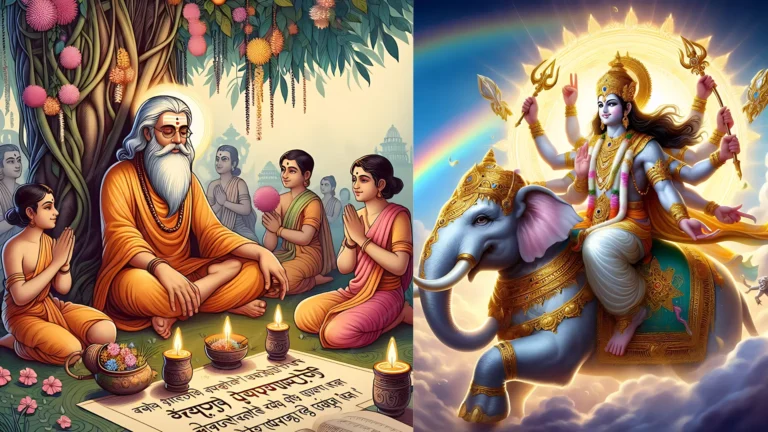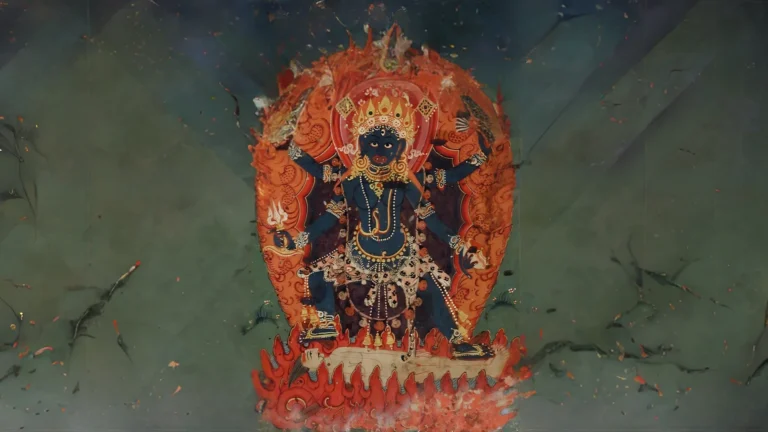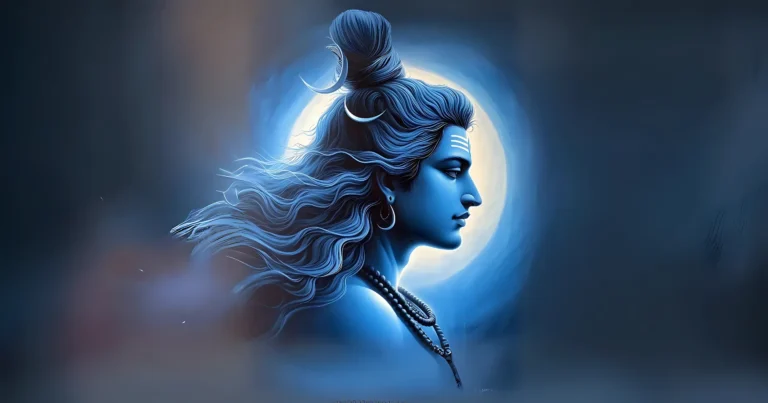Please Like the Blog and Share it for Maximum Reach
Table of Contents
The Greatness of Tulsidas Goswami’s Ramcharitamanas

The Ramcharitmanas is a scripture that balances all schools of thought. There are two-schools of thought-
1) The first school of thought wants others to accept their path as the highest means for God-Realization. They cancel all other faith-systems and feel that their path is the highest and nothing stands above it.
2) The second unique viewpoint, which Goswami Tulsidasji, mentions in the Ramcharitmanas and Vinay Patrika is that- ‘There is no point in arguing which path is the best. We should instead see which path suits us the most. This would be most sensible.”
If you go to a clinic and ask the doctor to give you the best medicine, he will surely say that all my medicines work wonderfully but first tell me what is your disease as per that I will give the medication. Which means every patient has a different treatment.
You cannot use the same cure for all patients. We must understand that every person is different, every person has a different set of samskaras and different set of problems. So, the same sadhana path cannot suit all people.
What is Correct as per Goswami Tulsidasji
In the Vinay Patrika, Someone asked Goswami Tulsidasji what is right as per him?
Goswamiji wrote a Sutra and said-
प्रीति प्रतीति जहाँ जाकी तहँ ताको काज सरो |
prīti pratīti jahā jākī taha tāko kāja saro
Wherever the person feels most connected and attached, that is his ideal path. This sutra is also mentioned in the Manas. He believes that we can solve our own problems by attaching ourselves to a faith system.
Overview of Karma, Jnana and Bhakti
There are three main paths. Karma, Jnana and Bhakti. Karma focusses on how we live life responsibly in the world and side by side work on our internal Vrittis. As per the Jnana school of thought, as long as we live in this world, our problems won’t end.

So Jnana advises us to finish off the world with the axe of knowledge. Jnana’s prime focus is on the fallacy of the world. Whatever problems we face here is due to our attachment to this world, but if we cut off this world from its very root with Jnana, problems shall end by themselves.
A Karma yogi lives in the world while a Jnani cuts off the world.
What is the Way of Bhakti?
Bhakti says that this world is an ocean of misery. Just create a new world of emotions and once you enter that world, you won’t feel the ups-and downs of this world. A Bhakta creates a new-world. But, what is this new world?

Let us understand this with an event in Goswami Tulsidasji’s life-
Tulsidasji rejects Mughal King Akbar’s appeal
During Tulsidasji’s times, Akbar was the Mughal king. Logically Goswamiji was the subject of Akbar. But Goswami ji never spoke about Akbar in the wildest of dreams.
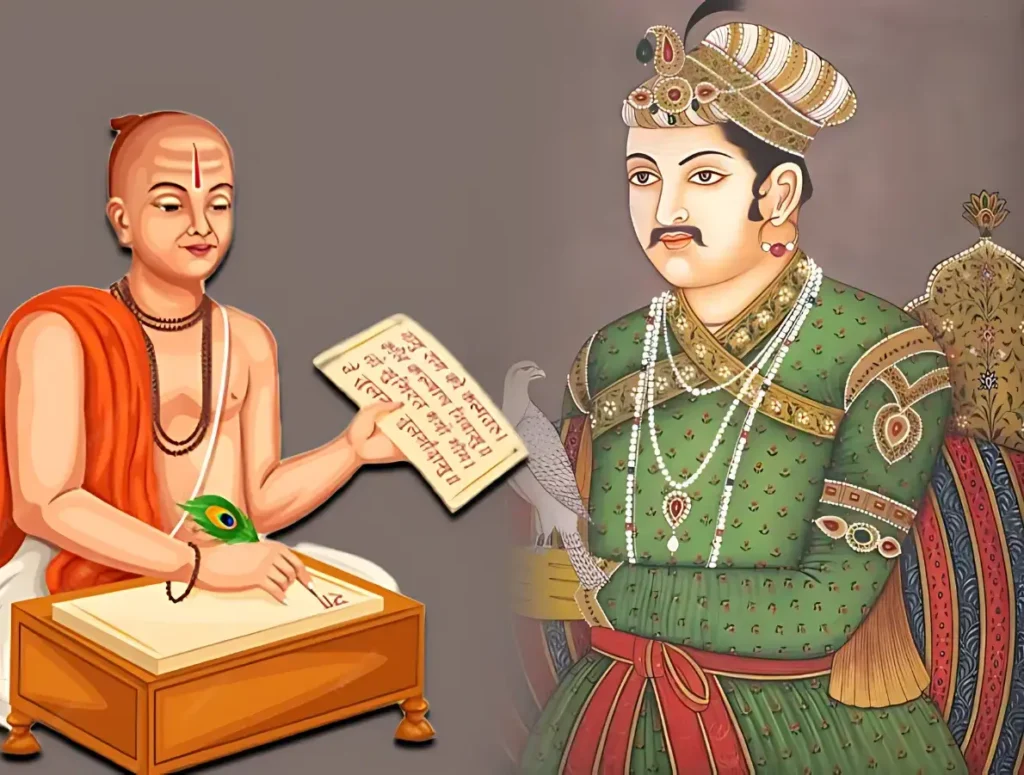
Somebody told Goswamiji that Akbar is a very loving and kind king, he respects saints and provides for them, he wants you to join his court. To this, Goswamiji quickly said “How can I attend the courts of two kings simultaneously?”
The person was shocked, he asked- Whose court do you go to? Goswamiji said-
हम चाकर रघुबीर के
ham cākar raghubīr ke
“I belong to the court of the greatest Lord Sri Rama.”
The man further said- “But still can’t you attend Akbar’s court also?” To this Goswmaiji said- “But my problem is –
हम चाकर रघुबीर के पटो लिखो दरबार |
ham cākar raghubīr ke paṭo likho darabār
I have already signed an agreement that I won’t work anywhere else leaving his court-
हम चाकर रघुबीर के पटो लिखो दरबार |
तुलसी अब का होहिंगे नर के मनसबदार ||
ham cākar raghubīr ke paṭo likho darabār |
tulasī ab kā hohinge nar ke manasabadār ||
You may also want to read- 3 Keys for Unlocking the Karma Effect
Goswami Tulsidas rejects Akbar
If Goswamiji had accepted Akbar as the present ruler he could have possibly accepted the offer but he says, ‘I am the servant of Ishwar himself.’ The kingdoms of mortal men are temporary, it exists today, it may not exist tomorrow, but Sri Rama’s kingdom will exist eternally.
Anybody may rule this material world, but Goswamiji only sees Rama-Rajya everywhere. This is why he considers himself a member of Shri Rama’s court. Though Akbar ruled the physical world, he has no entry in Goswamiji’s world of emotions or Bhavarajya.
When Goswamiji narrates the Ramcharitmanas we shouldn’t see Ramcharitmanas as a forgotten history that happened million years ago in the Treta yuga. The characters of Ramayana should become a living reality for us. When we read the period of Ram-rajya, we can imagine how happy the residents of Ayodhya were during Sri Rama’s time. But how is it going to benefit us?
Goswami Tulsidas describes the Bala Kanda
Goswamiji has very beautifully described Sri Rama’s childhood pastimes in the Ramcharitmanas. When he was about to re-write the same in Kavitavali someone told him- “Why are you repeating the same thing when you have already described it in the Ramcharitmanas.
When you start a new book, you should narrate new stories, new pastimes. Why drag the same old Bala kreeda (childhood play or pastimes)?”
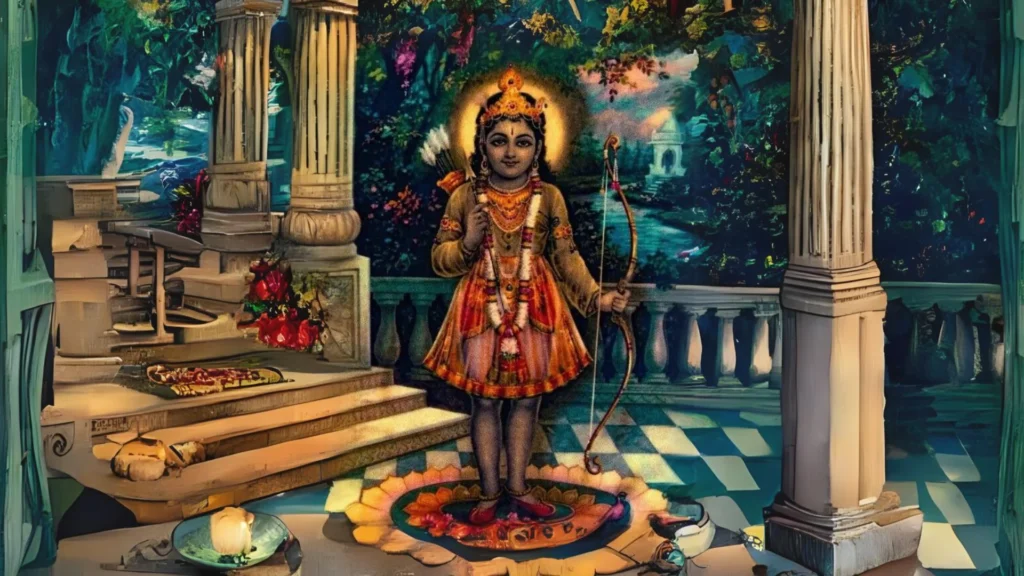
Goswamiji says- “No, there is a difference here. In the Ramcharitmanas, Shri Ram played in the courtyard of Dasharatha Maharaj”-
मंगल भवन अमंगल हारी|
द्रबउ सो दसरथ अजिर बिहारी ||
maṃgala bhavana amaṃgala hārī|
drabau so dasaratha ajira bihārī ||
“But, In Kavitavali. I have added a new line-
अवधेस के बालक चारि सदा,
तुलसी मन मंदिर में बिहरैं |
avadhesa ke bālaka cāri sadā,
tulasī mana maṃdira meṃ biharaiṃ |
Shri Rama Plays in the Cradle of my heart.

Which simply means that unless we get Shri Rama from Dashratha’s courtyard into the temple of our hearts we can’t truly understand the significance of Ramcharitmanas. Though Lord Rama played in Dashratha Maharaj’s courtyard, unless we bring him into our hearts and see for ourselves his sweet pastimes, we cannot truly experience fulfilment.
Tulsidasji’s love for Sri Rama
When the mothers see the beauty of Shri Rama, Goswamiji writes-
निरखहिं छबि जननी तृण तोरी |
nirakhahiṃ chabi jananī tṛṇa torī |
The Mothers first break a blade of grass and then see Sri Rama. They are afraid that their own sight mustn’t harm their son, which is why they first see the straw. If anything must happen, let it happen to the straw and let Sri Rama stay safe. Someone asked Goswamiji- “The mothers break straw on seeing Sri Rama, what do you do on seeing Him?” Goswamiji quickly said-
नेवछावरि प्राण करै तुलसी,
बलि जाउँ लला इन बोलनि की |
nevachāvari prāṇa karai tulasī,
bali jāu lalā ina bolani kī |
“I can throw my life at His sweet words. What is a straw? His beauty is such that it is justice only if you throw your life like a straw at His feet.” In this manner, seeing the pastimes of Bhagavan, a Bhakta drowns himself in an ocean of bliss even while living in this material world.
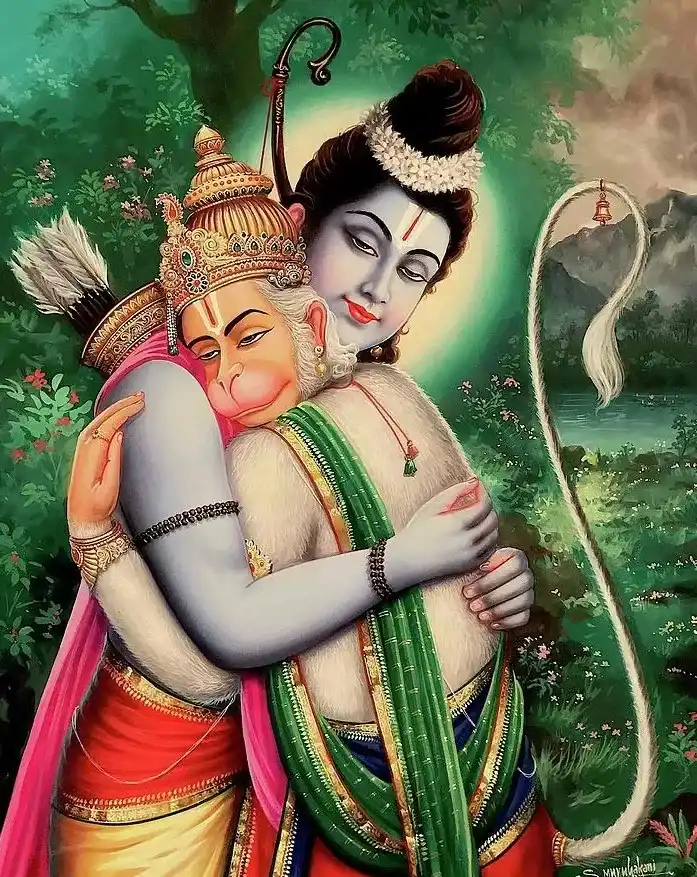
He can see the pastimes happening before him and he himself becomes a character and participates in the play. Truly, this is the purpose of the Ramcharitmanas. How can we benefit by pointing out which character is the best in the Ramcharitmanas.
Instead, we must strive to become one of them. This divine teaching is hidden in the Ramcharitmanas. One such character is Lord Ganesha.
Lord Ganesha is the Lord of Intelligence
As we know, Lord Ganesha is the Lord of Intelligence. He saw ‘Ram Nama’ as the pure underlying Knowledge principle. There is predominance of discrimination or Viveka in his approach. Once a contest was held.
The stake was – “Which god should be given the privilege of being first. worshipped.” So Lord Shiva decided that whichever Devata circumambulates the entire universe and reaches first shall be declared the winner.
7/8 Questions from Sanatana Dharma
The scores generated in this Quiz may or may not be absolute. There may be right or wrong answers to each Question. A percentage towards 100 indicates that you are more aligned to the overall subject matter.
Who are Devatas?
They are different types of virtues. The position of Devata is attained only after accumulating a hefty bank balance of pious deeds. So worshipping a Devata foremost simply means that out of all virtues, which virtue we value the most in our lives.
Lord Shiva is the judge. All Devatas sat on their speedy vehicles and set off with the speed of wind. Even Lord Ganesha actively participated. But Ganeshji’s vehicle is Mushukraj, the slowest of all vehicles. Yet he continued his journey without feeling the least disappointed.
On the way, the Devatas happened to see Narada Muni. In spite of seeing the sage, the Devas hid from his vision. They thought “Where is the time to meet the sage. At the moment we are striving to win the race. If we talk to him and offer our respects, we will lose out on time. They feared they shouldn’t report late and lose the competition.

Naradji understood that he was deliberately being avoided. As Ganeshji came that way, he got down from his vehicle and very submissively bowed before the sage. They then had a hearty question-answer session on various spiritual topics.
Sage Narada Advises Lord Ganesha
Naradji then said- “Scientifically speaking I see negligible chances of your winning the race. Your vehicle is so slow. Why are you wasting your time?” As Lord Ganesha is the Lord of intelligence, he gave a very beautiful reply. He said- “That knowledge which makes one inactive, is of no use.” Actually there should be perfect harmony between thought, emotion and action.
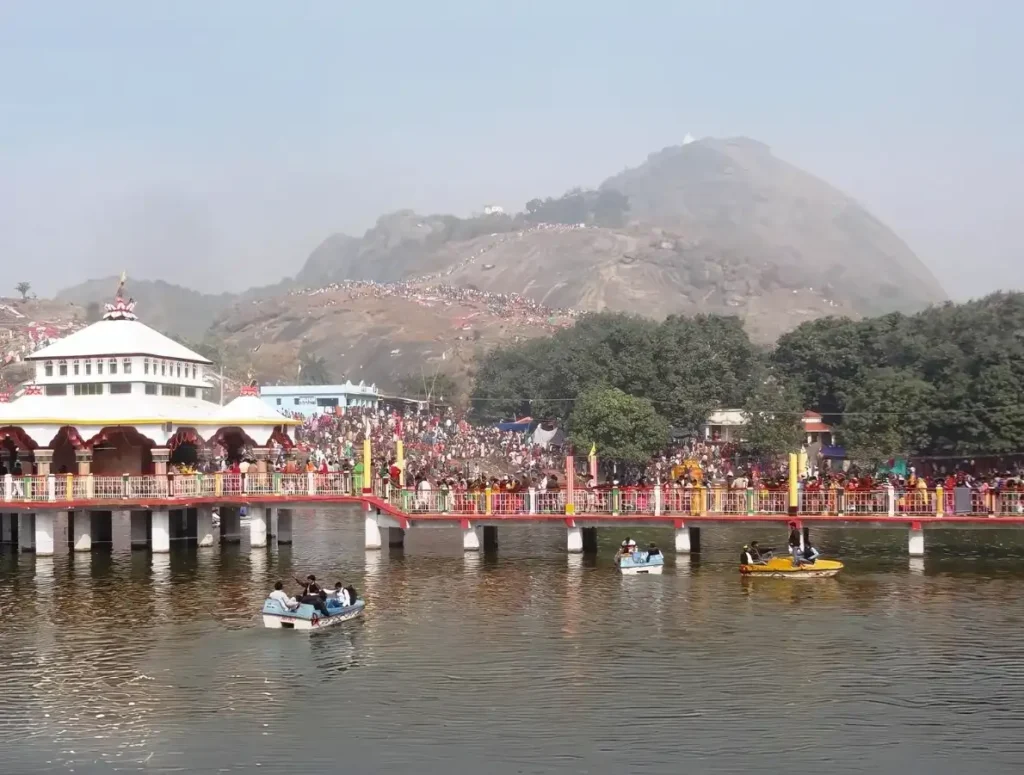
The churning of the ocean- a perfect balance. Let us take the churning of the ocean as an example-
The Mandarachal mountain was used to churn the ocean. In the word ‘Mandarachal’, the word ‘Achal’ means non-motile. The Mandar-achal mountain represents thought or idea.
A mountain is always static. Thought should always be still. But, Lord Vishnu says-
मुदिताँ मथै बिचार मथानी |
muditā mathai bicāra mathānī |
“No, Move the Mandarachal Mountain. Unless you move the mountain you cannot derive the nectar.”
Thought must be set to action. If thought just remains in the mental plane, you cannot taste the elixir. You need to churn it. You need to move the churner. A thought must have momentum. This is the role of Purushartha or Karma.
Role of Surrender
You find another very beautiful teaching-
When the Mandarchal Mountain was plunged into the ocean, it began to sink due to its weight. Bhagavan had to incarnate as a tortoise and shoulder it on his back. Thus the task of churning the ocean went on successfully.
What does this indicate? Inspite of having thought and action, the devas lacked surrender. Unless one surrenders all thoughts and actions unto Bhagavan, one’s efforts won’t’ bear results. This is the primary teaching.
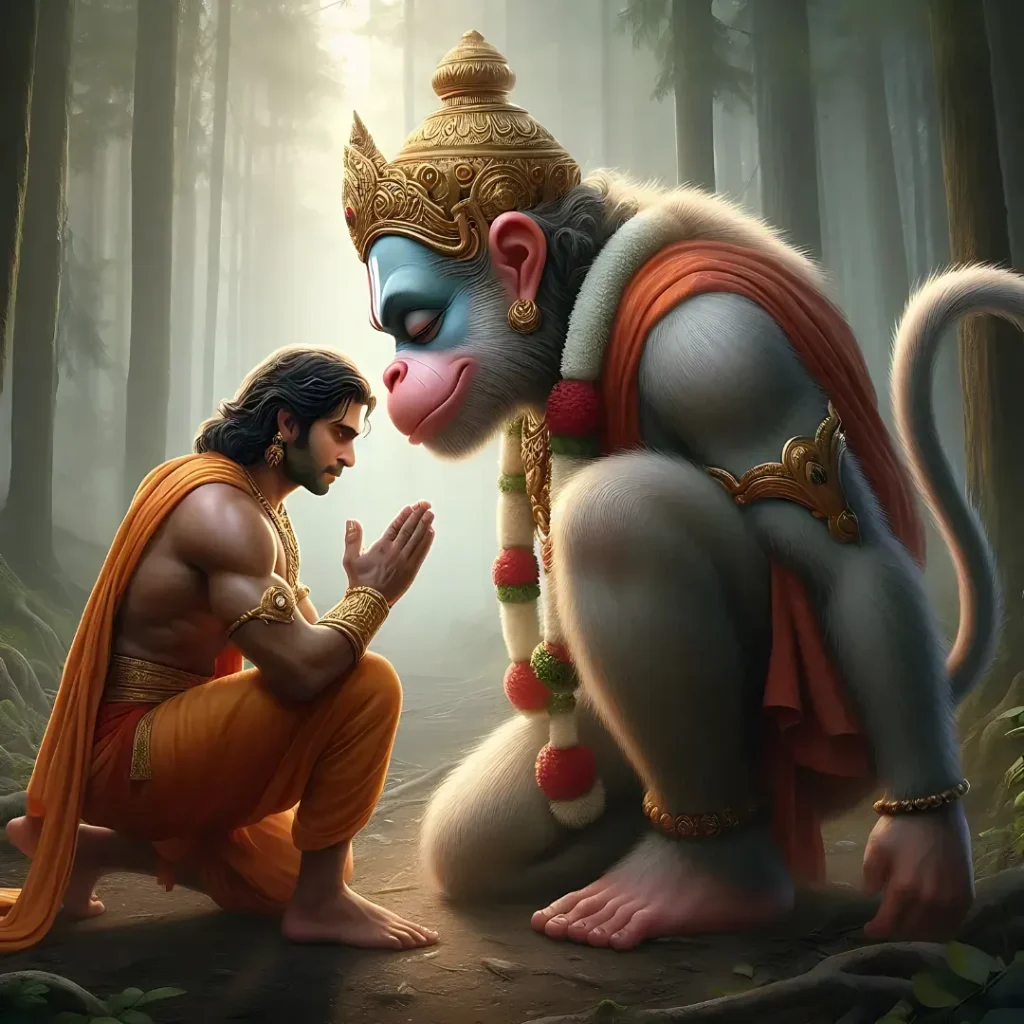
Bhagavan is not overtly evident from the outside, yet he is the one who is shouldering the task on his back. See, how beautifully all the three have united. Knowledge, devotion and action. Jnana, Bhakti and Karma. Many times we see people working in extremes. Those people who think a lot don’t perform action.
Those who act, don’t think properly. The ones who are immersed in thought lack the ability to enjoy the beauty of life. All the three must work in harmony.
Lord Ganesha’s Example
You find a perfect harmony of Jnana, Karma and Bhakti in the life of Lord Ganesha.
Lord Ganesh said “If I had earlier itself anticipated my failure in the contest, I wouldn’t have made it till here. He then says a very beautiful thing- “This contest of circumambulating the universe is merely a medium.
Lord Ganesha’s words are soaked in insight. We find a similar instance when Sri Rama meets Sage Valmiki, Lord Rama told the sage-
तात बचन पुनि मातु हित भाई भरत अस राउ |
मो कहुँ दरस तुम्हार प्रभु सबु मम पुन्य प्रभाउ ||
tāta bacana puni mātu hita bhāī bharata asa rāu |
mo kahu darasa tumhāra prabhu sabu mama punya prabhāu ||
The exile was not at all painful for me, I have only gained from this journey. I am the most fortunate, had I not been exiled, how could I have got your darshan?” Valmikiji said- “If there is an adept definition-maker like you, then all sorrows shall totally disappear from one’s life.”
Even Lord Ganesha said the same thing to Narada muni. He said. “Oh sage! I have already reaped the benefits of circumambulating the universe. I have got your Darshan, Is it less in any way?”
Naradji understood that Lord Ganesha innately possessed the eye for Viveka. He is bulky, even his vehicle is slow, yet he didn’t remain actionless. He even realizes the greatness of Satsanga with a sage. Naradji being pleased with Lord Ganesha, offered him a solution.
He said “Inscribe the name ‘Rama’ and circumambulate it. Then report to Lord Shiva that you have finished circumambulating the entire universe.” Ganeshji did what was told. If Naradji had rendered the same sermon to the other devas, they would have shirked his advice.

They would instead say- “Do you wish to foil our chances. We won’t listen to you.”
Lord Ganesha recognized the subtle principle hidden in the name and exclaimed- “Excellent, What a brilliant idea you have suggested.” The sage is referring to the underlying origin of the entire universe from where the gross has expanded. The Divine name of Bhagavan is the source of the entire universe.
The divine syllables form the basis of creation.
The story of Guru and Shishya
A guru once instructed his disciple to bring the entire banyan tree to his hermitage. The disciple went and brought the seed of a banyan tree. The guru was pleased and lovingly hugged the disciple.

The disciple had grasped the underlying meaning of his words. Getting a banyan tree doesn’t mean uprooting it. The context was to bring the seed, the very origin from which the tree had emerged. Lord Ganesha is extremely intelligent. Goswami Tulsidas explains the underlying principle of the name-
बंदउँ नाम राम रघुबर को |
हेतु कृसानु भानु हिमकर को ||
बिधि हरि हरमय बेद प्रान सो |
अगुन अनुपम गुन निधान सो ||
baṃdau nāma rāma raghubara ko |
hetu kṛsānu bhānu himakara ko ||
bidhi hari haramaya beda prāna so |
aguna anupama guna nidhāna so ||
Rama nama is the very source of the form principle, formless principle, fire, sun, and moon.
Lord Shiva Pleased with Lord Ganesha
When Lord Ganesha returned from his tour, Lord Shiva held him in a tight embrace. He said- “We have been having a father-son relationship since many days, but it is only now that you have grasped the underlying meaning of my words.”

This is how Lord Ganesha acquired the position of being the first to be worshiped.
There is another anecdote in this regard. As the Devatas crossed the various terrains, they could see the tiny footprints of Mushakraj awaiting them. They would wonder that Lord Ganesha was the slowest of all, yet how are these footprints leading them.
When a Jnani takes refuge under the name, he analyses the syllables.
नाम निरूपण नाम जतन तें
सोउ प्रगटत जिमि मोल रतन तें ||
nāma nirūpaṇa nāma jatana teṃ
sou pragaṭata jimi mola ratana teṃ ||
‘Ra’ and ‘Ma’ appear physical but in jnana studies its underlying meaning is the cosmic sound. Thus a Jnani delves into the nature of existence with the precision of his discrimination.
Please Like the Blog and Share it for Maximum Reach
You display your love by reading this valuable material. So kindly read and consider financially supporting us to keep our efforts going with renewed vigor! Supporters in India can donate via Razorpay while those abroad can use PayPal!






